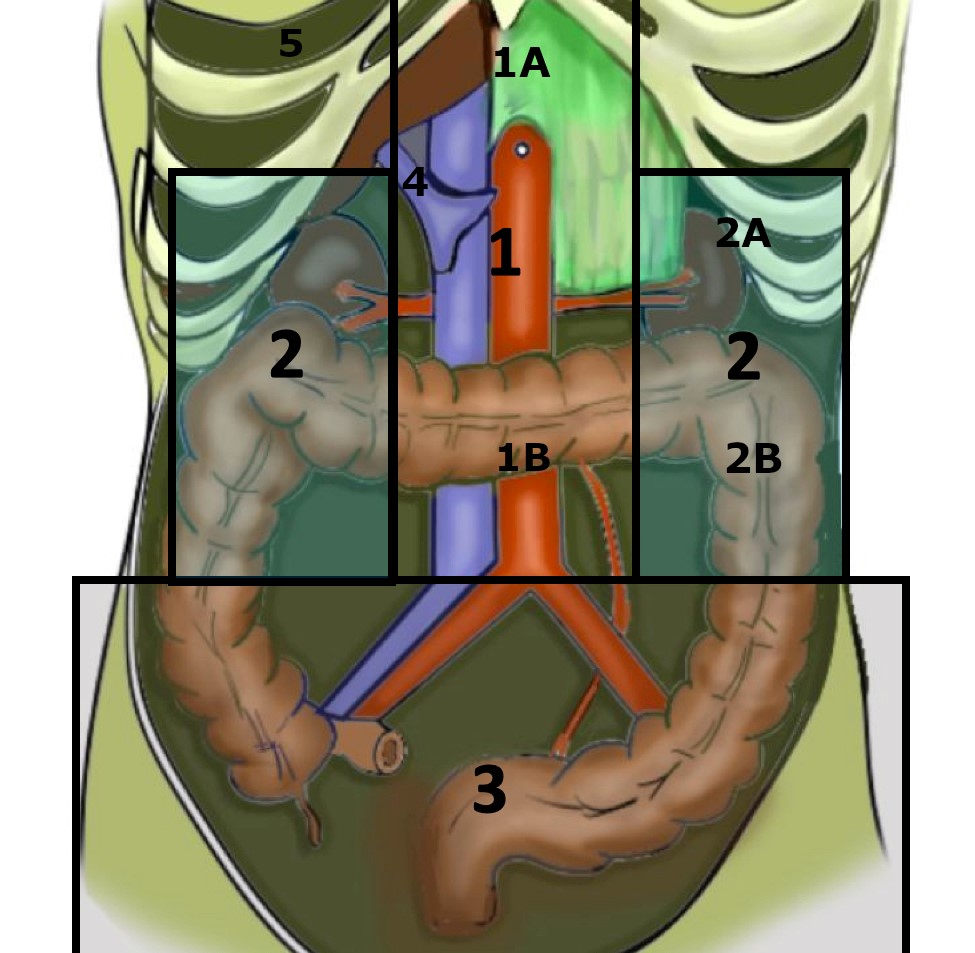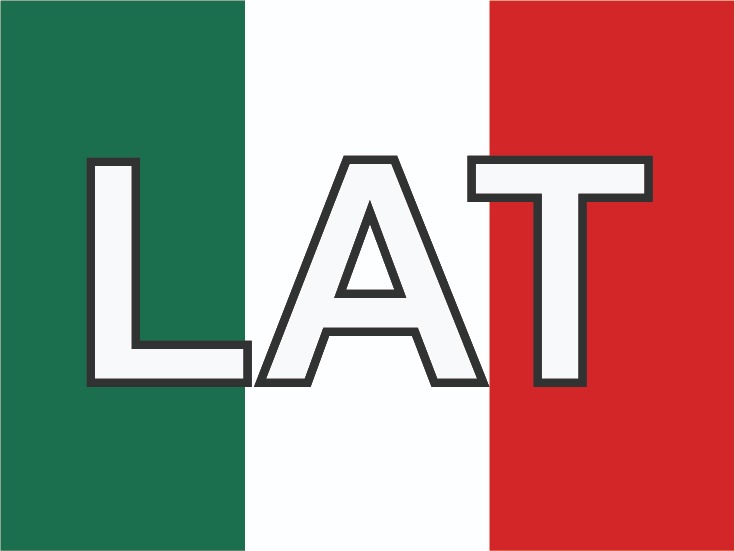Damage control in abdominal vascular trauma
Abstract
Abdominal vascular trauma occurs in a small proportion of patients admitted in trauma centers. However, up to a quarter or a third of the patients who require a laparotomy will have a vascular injury. Preoperative identification is impossible in most cases, therefore, surgeons must be prepared for its early intraoperative recognition to allow appropriate management. This include temporary bleeding control techniques, identification of the probable injured vessel and the specific approach and management. Often, recognition of exsanguinating intra-abdominal hemorrhage will lead to immediate surgical indication, with activation of damage control protocols and consideration of early aortic occlusion.This paper illustrates the applications of damage control in the management of patients with abdominal vascular trauma.
Authors
Downloads
Keywords
- Hemoperitoneum
- Aorta, Abdominal
- Laparotomy
- Wounds, Gunshot
- Shock, Hemorrhagic
- Vascular System Injuries
- Abdominal Injuries
- damage control surgery
References
Branco BC, Musonza T, Long MA, Chung J, Todd SR, Wall MJ, Jr., Mills JL, Sr., Gilani R (2018) Survival trends after inferior vena cava and aortic injuries in the United States. J Vasc Surg 68 (6):1880-1888. doi:10.1016/j.jvs.2018.04.033 https://doi.org/10.1016/j.jvs.2018.04.033
Debakey ME, Simeone FA (1946) Battle Injuries of the Arteries in World War II : An Analysis of 2,471 Cases. Ann Surg 123 (4):534-579 https://doi.org/10.1097/00000658-194604000-00005
Rich NM, Baugh JH, Hughes CW (1970) Acute arterial injuries in Vietnam: 1,000 cases. J Trauma 10 (5):359-369.
https://doi.org/10.1097/00005373-197005000-00001
Patel JA, White JM, White PW, Rich NM, Rasmussen TE (2018) A contemporary, 7-year analysis of vascular injury from the war in Afghanistan. J Vasc Surg 68 (6):1872-1879. https://doi.org/10.1016/j.jvs.2018.04.038
Mattox KL, Feliciano DV, Burch J, Beall AC, Jr., Jordan GL, Jr., De Bakey ME (1989) Five thousand seven hundred sixty cardiovascular injuries in 4459 patients. Epidemiologic evolution 1958 to 1987. Ann Surg 209 (6):698-705; discussion 706-697.
https://doi.org/10.1097/00000658-198906000-00007
Morales-Uribe CH, Sanabria-Quiroga AE, Sierra-Jones JM (2002) Vascular trauma in Colombia: experience of a level I trauma center in Medellin. Surg Clin North Am 82 (1):195-210. https://doi.org/10.1016/S0039-6109(03)00149-X
Nicholas JM, Rix EP, Easley KA, Feliciano DV, Cava RA, Ingram WL, Parry NG, Rozycki GS, Salomone JP, Tremblay LN (2003) Changing patterns in the management of penetrating abdominal trauma: the more things change, the more they stay the same. J Trauma 55 (6):1095-1108; discussion 1108-1010. https://doi.org/10.1097/01.TA.0000101067.52018.42
Baptiste H, García A, Franco J, Niño F, Guerra J, Ferrada R (1999) Manejo selectivo del trauma abdominal por arma de fuego. Estudio prospectivo. Paper presented at the XXV Congreso de la Asociación Colombiana de Cirugía., Medellín, Colombia,
Avendaño S, García A (1999) Análisis de laparotomías innecesarias en trauma abdominal por bala. Estudio retrospectivo. . Paper presented at the XXV Congreso de la Asociación Colombiana de Cirugía., Medellín, Colombia,
Adkins RB, Jr., Bitseff EL, Jr., Meacham PW (1985) Abdominal vascular injuries. South Med J 78 (10):1152-1160. https://doi.org/10.1097/00007611-198510000-00003
Asensio JA, Chahwan S, Hanpeter D, Demetriades D, Forno W, Gambaro E, Murray J, Velmahos G, Marengo J, Shoemaker WC, Berne TV (2000) Operative management and outcome of 302 abdominal vascular injuries. Am J Surg 180 (6):528-533; discussion 533-524. https://doi.org/10.1016/S0002-9610(00)00519-5
García A, Soto R, Ferrada R, Delgado LH (1993) Trauma vascular abdominal. Reporte de 205 casos. Paper presented at the VI Congress, Panamerican Trauma Society, San José, Costa Rica,
Kashuk JL, Moore EE, Millikan JS, Moore JB (1982) Major abdominal vascular trauma--a unified approach. J Trauma 22 (8):672-679. https://doi.org/10.1097/00005373-198208000-00004
Khoury G, Sfeir R, Khalifeh M, Khoury SJ, Nabbout G (1996) Penetrating trauma to the abdominal vessels. Cardiovasc Surg 4 (3):405-407. https://doi.org/10.1016/0967-2109(95)00077-1
Paul JS, Webb TP, Aprahamian C, Weigelt JA (2010) Intraabdominal vascular injury: are we getting any better? J Trauma 69 (6):1393-1397. https://doi.org/10.1097/TA.0b013e3181e49045
Tyburski JG, Wilson RF, Dente C, Steffes C, Carlin AM (2001) Factors affecting mortality rates in patients with abdominal vascular injuries. J Trauma 50 (6):1020-1026. https://doi.org/10.1097/00005373-200106000-00008
Weale R, Kong V, Manchev V, Bekker W, Oosthuizen G, Brysiewicz P, Laing G, Bruce J, Clarke D (2018) Management of intra-abdominal vascular injury in trauma laparotomy: a South African experience. Can J Surg 61 (3):158-164
https://doi.org/10.1503/cjs.009717
Asensio JA, Petrone P, Garcia-Nunez L, Healy M, Martin M, Kuncir E (2007) Superior mesenteric venous injuries: to ligate or to repair remains the question. J Trauma 62 (3):668-675; discussion 675. https://doi.org/10.1097/01.ta.0000210434.56274.7f
Navsaria PH, de Bruyn P, Nicol AJ (2005) Penetrating abdominal vena cava injuries. Eur J Vasc Endovasc Surg 30 (5):499-503.
https://doi.org/10.1016/j.ejvs.2005.08.004
Prichayudh S, Rassamee P, Sriussadaporn S, Pak-Art R, Sriussadaporn S, Kritayakirana K, Samorn P, Narueponjirakul N, Uthaipaisanwong A (2019) Abdominal vascular injuries: Blunt vs. penetrating. Injury 50 (1):137-141. https://doi.org/10.1016/j.injury.2018.11.045
Sorrentino TA, Moore EE, Wohlauer MV, Biffl WL, Pieracci FM, Johnson JL, Barnett CC, Bensard DD, Burlew CC (2012) Effect of damage control surgery on major abdominal vascular trauma. J Surg Res 177 (2):320-325. https://doi.org/10.1016/j.jss.2012.05.020
Sullivan PS, Dente CJ, Patel S, Carmichael M, Srinivasan JK, Wyrzykowski AD, Nicholas JM, Salomone JP, Ingram WL, Vercruysse GA, Rozycki GS, Feliciano DV (2010) Outcome of ligation of the inferior vena cava in the modern era. Am J Surg 199 (4):500-506. https://doi.org/10.1016/j.amjsurg.2009.05.013
Roberts DJ, Bobrovitz N, Zygun DA, Ball CG, Kirkpatrick AW, Faris PD, Parry N, Nicol AJ, Navsaria PH, Moore EE, Leppaniemi AK, Inaba K, Fabian TC, D'Amours S, Brohi K, Stelfox HT (2015) Indications for use of thoracic, abdominal, pelvic, and vascular damage control interventions in trauma patients: A content analysis and expert appropriateness rating study. J Trauma Acute Care Surg 79 (4):568-579. https://doi.org/10.1097/TA.0000000000000821
García A, Odoñez CA, Orozco-Martin V, Escobar S, Puyana JC, Parra M, Badiel M (2016) Creation of a Simple Mathematical Formula to Predict of Damage Control Laparotomy in Penetrating Trauma Patients. J Am Coll Surg 223:e197
https://doi.org/10.1016/j.jamcollsurg.2016.08.498
Ordonez CA, Badiel M, Pino LF, Salamea JC, Loaiza JH, Parra MW, Puyana JC (2012) Damage control resuscitation: early decision strategies in abdominal gunshot wounds using an easy "ABCD" mnemonic. J Trauma Acute Care Surg 73 (5):1074-1078. https://doi.org/10.1097/TA.0b013e31826fc780
Deree J, Shenvi E, Fortlage D, Stout P, Potenza B, Hoyt DB, Coimbra R (2007) Patient factors and operating room resuscitation predict mortality in traumatic abdominal aortic injury: a 20-year analysis. J Vasc Surg 45 (3):493-497. https://doi.org/10.1016/j.jvs.2006.11.018
Garcia AF, Manzano-Nunez R, Orlas CP, Ruiz-Yucuma J, Londono A, Salazar C, Melendez J, Sanchez AI, Puyana JC, Ordonez CA (2020) Association of resuscitative endovascular balloon occlusion of the aorta (REBOA) and mortality in penetrating trauma patients. Eur J Trauma Emerg Surg. https://doi.org/10.1007/s00068-020-01370-9
Ordonez CA, Herrera-Escobar JP, Parra MW, Rodriguez-Ossa PA, Mejia DA, Sanchez AI, Badiel M, Morales M, Rojas-Mirquez JC, Garcia-Garcia MP, Pino LF, Puyana JC (2016) Computed tomography in hemodynamically unstable severely injured blunt and penetrating trauma patients. J Trauma Acute Care Surg 80 (4):597-602; discussion 602-593. https://doi.org/10.1097/TA.0000000000000975
Ordonez CA, Rodriguez F, Orlas CP, Parra MW, Caicedo Y, Guzman M, Serna JJ, Salcedo A, Zogg CK, Herrera-Escobar JP, Melendez JJ, Angamarca E, Serna CA, Martinez D, Garcia AF, Brenner M (2020) The critical threshold value of systolic blood pressure for aortic occlusion in trauma patients in profound hemorrhagic shock. J Trauma Acute Care Surg 89 (6):1107-1113.
https://doi.org/10.1097/TA.0000000000002935
Joseph B, Zeeshan M, Sakran JV, Hamidi M, Kulvatunyou N, Khan M, O'Keeffe T, Rhee P (2019) Nationwide Analysis of Resuscitative Endovascular Balloon Occlusion of the Aorta in Civilian Trauma. JAMA Surg 154 (6):500-508. https://doi.org/10.1001/jamasurg.2019.0096
Wiencek RG, Jr., Wilson RF (1987) Injuries to the abdominal vascular system: how much does aggressive resuscitation and prelaparotomy thoracotomy really help? Surgery 102 (4):731-736
Bowley DM, Barker P, Boffard KD (2006) Intraoperative blood salvage in penetrating abdominal trauma: a randomised, controlled trial. World J Surg 30 (6):1074-1080. doi:10.1007/s00268-005-0466-2
https://doi.org/10.1007/s00268-005-0466-2
Timberlake GA, McSwain NE, Jr. (1988) Autotransfusion of blood contaminated by enteric contents: a potentially life-saving measure in the massively hemorrhaging trauma patient? J Trauma 28 (6):855-857. doi:10.1097/00005373-198806000-00026
https://doi.org/10.1097/00005373-198806000-00026
García A, Soto R, Avendaño S, Ferrada R, Sánchez A, Puyana JC (2009) Hipotensión profunda en trauma abdominal por bala: ¿toracotomía previa a la laparotomía o control de daños? Rev Colomb Cir 24 (Sup):39 - 40
Feliciano DV (1990) Management of traumatic retroperitoneal hematoma. Ann Surg 211 (2):109-123. https://doi.org/10.1097/00000658-199002000-00001
García A, Ferrada R, Ordonez C, Siljic I, Suárez J, Gutiérrez MI, Mena J, Bejarano W, Pérez M, Puyana JC (2009) Evolución del control de daños en el manejo del trauma vascular abdominal. Rev Colomb Cir 24 (Sup):39 - 40
Mattox KL, McCollum WB, Beall AC, Jr., Jordan GL, Jr., Debakey ME (1975) Management of penetrating injuries of the suprarenal aorta. J Trauma 15 (9):808-815. https://doi.org/10.1097/00005373-197509000-00009
Accola KD, Feliciano DV, Mattox KL, Bitondo CG, Burch JM, Beall AC, Jr., Jordan GL, Jr. (1987) Management of injuries to the suprarenal aorta. Am J Surg 154 (6):613-618. https://doi.org/10.1016/0002-9610(87)90227-3
Inaba K, Aksoy H, Seamon MJ, Marks JA, Duchesne J, Schroll R, Fox CJ, Pieracci FM, Moore EE, Joseph B, Haider AA, Harvin JA, Lawless RA, Cannon J, Holland SR, Demetriades D, Multicenter Shunt Study G (2016) Multicenter evaluation of temporary intravascular shunt use in vascular trauma. J Trauma Acute Care Surg 80 (3):359-364; discussion 364-355. https://doi.org/10.1097/TA.0000000000000949
Degiannis E, Levy RD, Florizoone MG, Badicel TV, Badicel M, Saadia R (1997) Gunshot injuries of the abdominal aorta: a continuing challenge. Injury 28 (3):195-197. https://doi.org/10.1016/S0020-1383(96)00189-1
Myles RA, Yellin AE (1979) Traumatic injuries of the abdominal aorta. Am J Surg 138 (2):273-277. https://doi.org/10.1016/0002-9610(79)90385-4
Degiannis E, Velmahos GC, Levy RD, Souter I, Benn CA, Saadia R (1996) Penetrating injuries of the abdominal inferior vena cava. Ann R Coll Surg Engl 78 (6):485-489
Graham JM, Mattox KL, Beall AC, Jr., DeBakey ME (1978) Traumatic injuries of the inferior vena cava. Arch Surg 113 (4):413-418. https://doi.org/10.1001/archsurg.1978.01370160071011
Millikan JS, Moore EE, Cogbill TH, Kashuk JL (1983) Inferior vena cava injuries--a continuing challenge. J Trauma 23 (3):207-212. https://doi.org/10.1097/00005373-198303000-00005
Matsumoto S, Jung K, Smith A, Coimbra R (2019) Outcomes Comparison Between Ligation and Repair after Major Lower Extremity Venous Injury. Ann Vasc Surg 54:152-160. https://doi.org/10.1016/j.avsg.2018.05.062
Byerly S, Cheng V, Plotkin A, Matsushima K, Inaba K, Magee GA (2019) Impact of inferior vena cava ligation on mortality in trauma patients. J Vasc Surg Venous Lymphat Disord 7 (6):793-800. https://doi.org/10.1016/j.jvsv.2019.06.013
Ramnath R, Walden EC, Caguin F (1966) Ligation of the suprarenal vena cava and right nephrectomy with complete recovery. Am J Surg 112 (1):88-90. https://doi.org/10.1016/S0002-9610(66)90990-1
Votanopoulos KI, Welsh FJ, Mattox KL (2009) Suprarenal inferior vena cava ligation: a rare survivor. J Trauma 67 (6):E179-180. https://doi.org/10.1097/TA.0b013e3181469a0b
Ordonez CA, Parra MW, Salamea JC, Puyana JC, Millan M, Badiel M, Sanjuan J, Pino LF, Scavo D, Botache W, Ferrada R (2013) A comprehensive five-step surgical management approach to penetrating liver injuries that require complex repair. J Trauma Acute Care Surg 75 (2):207-211. https://doi.org/10.1097/TA.0b013e31829de5d1
Buckman RF, Jr., Miraliakbari R, Badellino MM (2000) Juxtahepatic venous injuries: a critical review of reported management strategies. J Trauma 48 (5):978-984. https://doi.org/10.1097/00005373-200005000-00030
Reynolds CL, Celio AC, Bridges LC, Mosquera C, O'Connell B, Bard MR, DeLa'o CM, Toschlog EA (2017) REBOA for the IVC? Resuscitative balloon occlusion of the inferior vena cava (REBOVC) to abate massive hemorrhage in retrohepatic vena cava injuries. J Trauma Acute Care Surg 83 (6):1041-1046. https://doi.org/10.1097/TA.0000000000001641
Ordonez CA, Herrera-Escobar JP, Parra M, Rodriguez-Ossa PA, Puyana JC, Brenner M (2016) A severe traumatic juxtahepatic blunt venous injury. J Trauma Acute Care Surg 80 (4):674 – 676 https://doi.org/10.1097/TA.0000000000000979
Burch JM, Feliciano DV, Mattox KL (1988) The atriocaval shunt. Facts and fiction. Ann Surg 207 (5):555-568.
https://doi.org/10.1097/00000658-198805000-00010
Pilcher DB, Harman PK, Moore EE, Jr. (1977) Retrohepatic vena cava balloon shunt introduced via the sapheno-femoral junction. J Trauma 17 (11):837-841. https://doi.org/10.1097/00005373-197711000-00003
Weber S, Murphy MM, Pitzer ME, Davis K, Jr. (1996) Management of retrohepatic venous injuries with atrial caval shunts. AORN J 64 (3):376-377, 380-372. https://doi.org/10.1016/S0001-2092(06)63051-2
Cogbill TH, Moore EE, Jurkovich GJ, Feliciano DV, Morris JA, Mucha P (1988) Severe hepatic trauma: a multi-center experience with 1,335 liver injuries. J Trauma 28 (10):1433-1438 https://doi.org/10.1097/00005373-198810000-00004
Diebel LN, Wilson RF, Bender J, Paules B (1991) A comparison of passive and active shunting for bypass of the retrohepatic IVC. J Trauma 31 (7):987-990. https://doi.org/10.1097/00005373-199107000-00018
Biffl WL, Moore EE, Franciose RJ (1998) Venovenous bypass and hepatic vascular isolation as adjuncts in the repair of destructive wounds to the retrohepatic inferior vena cava. J Trauma 45 (2):400-403. https://doi.org/10.1097/00005373-199808000-00038
Burch JM, Richardson RJ, Martin RR, Mattox KL (1990) Penetrating iliac vascular injuries: recent experience with 233 consecutive patients. J Trauma 30 (12):1450-1459 https://doi.org/10.1097/00005373-199012000-00003
Ball CG, Feliciano DV (2010) Damage control techniques for common and external iliac artery injuries: have temporary intravascular shunts replaced the need for ligation? J Trauma 68 (5):1117-1120. https://doi.org/10.1097/TA.0b013e3181d865c0
Stone HH, Fabian TC, Turkleson ML (1982) Wounds of the portal venous system. World J Surg 6 (3):335-341. https://doi.org/10.1007/BF01653551
Pachter HL, Drager S, Godfrey N, LeFleur R (1979) Traumatic injuries of the portal vein. The role of acute ligation. Ann Surg 189 (4):383-385
Sabat J, Hsu CH, Chu Q, Tan TW (2019) The mortality for surgical repair is similar to ligation in patients with traumatic portal vein injury. J Vasc Surg Venous Lymphat Disord 7 (3):399-404. https://doi.org/10.1016/j.jvsv.2018.08.007
Ivatury RR, Porter JM, Simon RJ, Islam S, John R, Stahl WM (1998) Intra-abdominal hypertension after life-threatening penetrating abdominal trauma: prophylaxis, incidence, and clinical relevance to gastric mucosal pH and abdominal compartment syndrome. J Trauma 44 (6):1016-1021; discussion 1021-1013. https://doi.org/10.1097/00005373-199806000-00014
Cirocchi R, Birindelli A, Biffl WL, Mutafchiyski V, Popivanov G, Chiara O, Tugnoli G, Di Saverio S (2016) What is the effectiveness of the negative pressure wound therapy (NPWT) in patients treated with open abdomen technique? A systematic review and meta-analysis. J Trauma Acute Care Surg 81 (3):575-584. https://doi.org/10.1097/TA.0000000000001126
Ribeiro MA, Jr., Barros EA, Carvalho SM, Nascimento VP, Cruvinel JN, Fonseca AZ (2016) Comparative study of abdominal cavity temporary closure techniques for damage control. Rev Col Bras Cir 43 (5):368-373. https://doi.org/10.1590/0100-69912016005015
Garcia AF, Sanchez AI, Gutierrez AJ, Bayona JG, Naranjo MP, Lago S, Puyana JC (2018) Effect of abdominal negative-pressure wound therapy on the measurement of intra-abdominal pressure. J Surg Res 227:112-118. https://doi.org/10.1016/j.jss.2018.02.030
Coimbra R, Hoyt D, Winchell R, Simons R, Fortlage D, Garcia J (1996) The ongoing challenge of retroperitoneal vascular injuries. Am J Surg 172 (5):541-544; discussion 545. https://doi.org/10.1016/S0002-9610(96)00231-0
Demetriades D, Theodorou D, Murray J, Asensio JA, Cornwell EE, 3rd, Velmahos G, Belzberg H, Berne TV (1996) Mortality and prognostic factors in penetrating injuries of the aorta. J Trauma 40 (5):761-763. https://doi.org/10.1097/00005373-199605000-00013
Lopez-Viego MA, Snyder WH, 3rd, Valentine RJ, Clagett GP (1992) Penetrating abdominal aortic trauma: a report of 129 cases. J Vasc Surg 16 (3):332-335; discussion 335-336 https://doi.org/10.1016/0741-5214(92)90365-F

Copyright (c) 2021 Universidad del Valle

This work is licensed under a Creative Commons Attribution-NonCommercial 4.0 International License.
The copy rights of the articles published in Colombia Médica belong to the Universidad del Valle. The contents of the articles that appear in the Journal are exclusively the responsibility of the authors and do not necessarily reflect the opinions of the Editorial Committee of the Journal. It is allowed to reproduce the material published in Colombia Médica without prior authorization for non-commercial use

 https://orcid.org/0000-0002-4096-1434
https://orcid.org/0000-0002-4096-1434


















